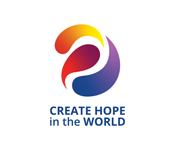Children of The Dump, A Model For Overcoming Poverty
|
Children of the Dumps |
Around the world there are millions of children living on garbage dumps, looking for scraps of food and sellable items buried am ong the disease-infested rubble. They compete for survival with flies, dogs, scavenging birds, and destitute adults. After searching through the dump, these children, if not homeless, return to make-shift lean-tos or huts without heat, electricity, running water, or sanitation facilities. There is no employment. Suicide, crime, disease, fear, and prostitution feed the despair by nourishing it with anger and a sense of total hopelessness.
Is there any possible way to save these children and their families, feed them, educated them, employ them, and give them hope for a future with dignity by making them self-sufficient? Yes, there is. An adoptable template and workable model has been created, tested, and proven to be successful. The Marco-Rotary Model, developed empirically in Chinandega, Nicaragua, may very well be a workable solution for other "children of the dumps" and their families around the globe.
What happened in Chinandega, Nicaragua?
Italian Missionary Father Marco Dessy found 800 children living off the city dump in Chinandega, Nicaragua. These children and their displaced families were economic victims from not only a change in national government but also from the natural devastation caused by Hurricane Mitch, a 1998 10-day storm packing winds of 180 miles per hour. With the assistance of local businesses and generous individuals, Father Dessy built a school and immediately enrolled 90 children from the dump. The school provided each child with one meal per day if they attended classes.
The Humble/Intercontinental Rotary Club in District 5890 adopted Father Dessy's "children of the dump" as their Club's first international project. The school was then enlarged with the resulting additional funds and labor. Now over 1700 children addend the school wearing blue and white uniforms and receive nourishing meals.
Rotary then formed a partnership with the Queen of Spain to build the Betania Trade School where these children can be taught metalworking, woodworking, sewing, and making candy confections to help support themselves after graduation.
Land was then located where a village could be built - one house at a time, slowing moving each family from their slum into respectable housing on 1/3 acre plots. Building materials were donated and construction volunteers trained the families to build their own house. This helped insure pride in ownership and an create an ability to maintain and repair the homes.
After the families established this little village, now named Santa Matilde, self-supporting trades were taught to the residence to help insure their survival. Families were provided with vegetable seeds, tools, fruit trees, and material to build a chicken coop to house the donated rooster and ten egg-laying hens. These micro farms, planted next to each house, provided both food and income for each family.
In three years the residents of Santa Matilde have become self-sufficient. A portion of each family's corn, beans, and eggs go back to the school for the children. Bartering between residents has created a functioning economy. Small stores have opened.
Today, two villages have been built using the Marco-Rotary Model. A third village will be started shortly.
Are there still children living on the dump in Chinandega, Nicaragua? Yes, there are as well as millions of other children trying to survive on thousands of other dumps around the world. Will the Marco-Rotary Model prove successful in rescuing the children and their families from the garbage dumps in other countries? Let's find out!
The Marco-Rotary Model
If you feed the hungry today, you must feed them again tomorrow. This process never ends, unless the hungry become self-sufficient by supporting themselves and taking care of their people. A multifaceted, all encompassing project that includes potable water, food, medical care, clothing, education, housing, vocational training, and a community economy must be undertaken.
An important part in the success of the Marco-Rotary Model is the intricate participation of the people being helped in all phases of the undertaking. In order for the children to get one nourishing meal per day, they must attend school - no school, no meal. The houses were not built by volunteers, but by the people themselves. This instills pride and helps insure the homes will be well maintained. The houses were titled to the women of the households with stipulation the house could not be sold or mortgaged for either 5 years or until the youngest child reached 15 years of age.
The Chinese proverb "Give a man a fish and you feed him for a day, teach a man to fish and you feed him for a lifetime," is the philosophy employed by the Marco-Rotary Model. Showing people how to become self-sufficient through literacy, education, and "hands-on" vocational training will allow the establishment of economically viable communities where people provide for themselves and others.
This website is dedicated to Father Marco Dessy of Chinandega, Nicaragua, the Humble Rotary Club in Houston, TX, its District 5890, the organization HOPE & Relief International, Inc. and the extraordinary efforts of hundreds of Rotarians under the guidance of Dennis Adams, Frank Huezo, Jim Kite, Larry Wright, and Mike McCullough.

